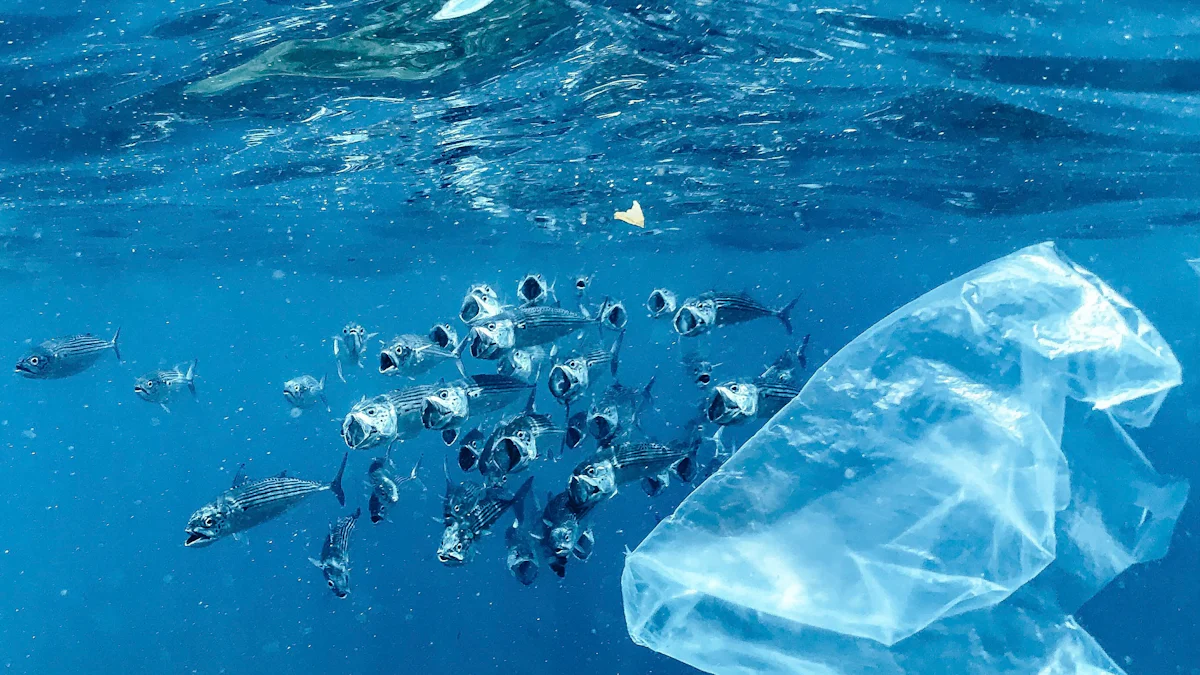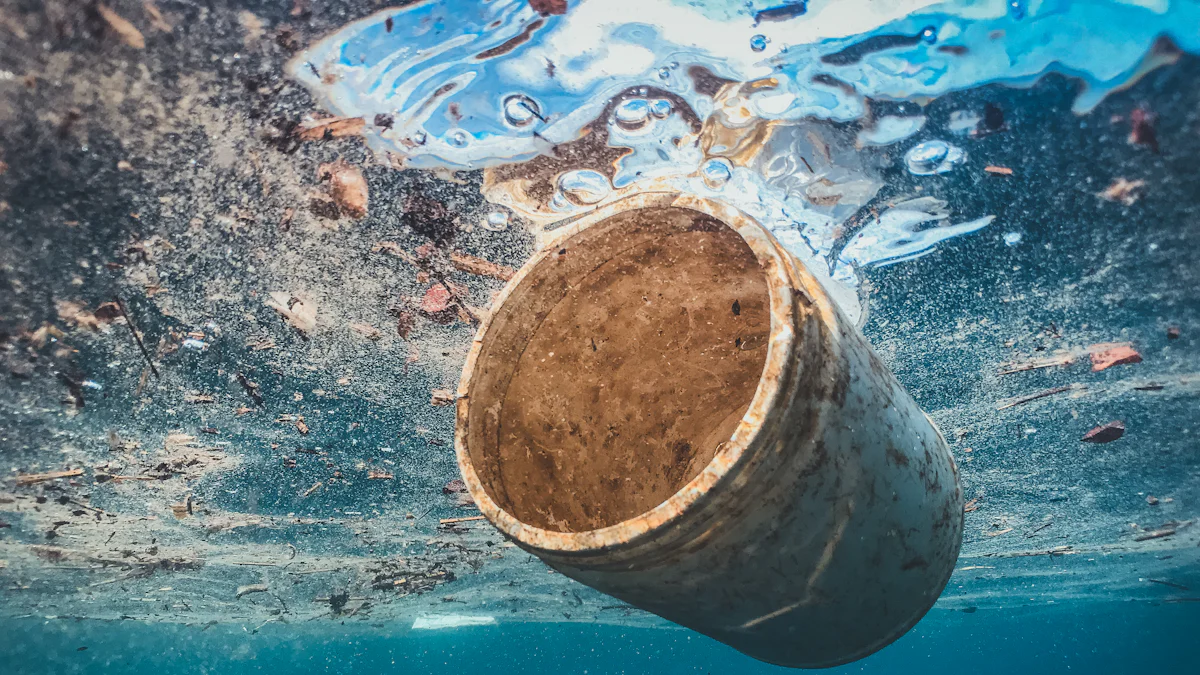
Imagine an oil spill spreading across the water, threatening marine life and ecosystems. A containment boom acts as your first line of defense in such disasters. This floating barrier traps oil on the surface, stopping it from spreading further. With over 1,000 spills reported annually in the U.S., these tools are vital. They help protect wildlife from the devastating effects of oil contamination, like fouling feathers or poisoning habitats. Whether caused by pipeline breaks or tanker accidents, spills wreak havoc. Containment booms make cleanup faster and more effective, reducing long-term damage to the environment.
Key Takeaways
Containment booms are important for controlling oil spills. They hold oil on the water’s surface to stop it from spreading. This helps protect delicate ecosystems.
Choosing the correct boom for the situation improves cleanup efforts. Different booms, such as oil spill and debris booms, have specific uses.
Weather can affect how well containment booms work. Careful planning and secure anchoring help them stay effective in bad weather.
Understanding Containment Booms

What Is a Containment Boom?
A containment boom is a floating tool designed to control the spread of oil during a spill. Think of it as a barrier that traps oil on the water’s surface, keeping it from drifting into sensitive areas like shorelines or marine habitats. These booms are essential in managing oil spills, whether they occur in oceans, rivers, or lakes. They help responders act quickly, reducing the environmental impact and making cleanup more efficient.
You’ll find containment booms made from tough materials like PVC and polyurethane. These materials are chosen for their durability and ability to handle harsh conditions. PVC is resistant to chemicals, making it perfect for oil spills. Polyurethane, on the other hand, is flexible and can withstand UV rays, making it ideal for various environments. This combination ensures the booms perform well, even in challenging situations.
Key Components of Spill Containment Booms
Spill containment booms are more than just floating barriers. They’re carefully designed to handle the unpredictable nature of oil spills. Here’s what makes them effective:
Rapid Deployment: Their design allows you to set them up quickly, which is crucial during emergencies.
Durable Outer Shell: Made from materials like TPU (Thermoplastic polyurethane), the outer layer resists waves, wind, and sunlight.
Flexibility: Booms can adapt to different water surfaces and spill shapes, ensuring they work in various conditions.
Visibility: Bright colors make them easy to spot during deployment and recovery.
Recent advancements have made these tools even better. For example, some booms now use high-strength materials for extra durability. Others feature modular designs, letting you adjust them to fit different water conditions. Enhanced anchoring systems also keep them stable in high-current areas. These innovations ensure that spill containment booms remain reliable in protecting marine ecosystems.
How Spill Containment Booms Work

Mechanism of Action
Spill containment booms work by creating a physical barrier that traps oil on the water’s surface. When you deploy a boom, it floats and forms a line that prevents the oil from spreading further. This containment makes it easier to collect and remove the oil before it causes more harm to the environment.
The design of these booms plays a big role in how they function. For example, the UPQUARK Oil Absorbent Boom not only floats but also absorbs oil, making it highly effective in cleanup operations. Its durable materials ensure it stays intact even in tough conditions. However, weather can impact performance. High winds or rough seas might dislodge or damage the boom, reducing its effectiveness. That’s why you need to consider the water conditions before deploying one.
Different deployment techniques also affect how well a boom works. For large spills, you can use U-shape or V-shape setups to concentrate the oil in one area. If you’re protecting a shoreline, you might place the boom parallel to the coast. Anchoring the boom securely is crucial to keep it in place, especially in high-current areas.
Types of Spill Containment Booms
Not all spill containment booms are the same. Each type serves a specific purpose, so choosing the right one depends on the situation. Here are some common types:
Oil Spill Booms: These are designed to contain oil spills in oceans, rivers, or lakes. They’re perfect for protecting sensitive shorelines.
Debris Booms: Use these to capture floating debris and keep it out of protected areas.
Silt and Sediment Booms: These control sediment spread during construction, helping maintain water quality.
Fire Booms: These are specialized for burning oil spills on the water, reducing environmental impact.
The materials and construction of a boom also determine where it works best. For instance, hard booms are great for calm waters because they’re sturdy but less flexible. Inflatable booms, on the other hand, adapt to various conditions and are easier to deploy. Here’s a quick comparison:
Type of Boom | Suitable Conditions | Characteristics |
|---|---|---|
Hard Boom | Calm Waters | Robust, made from solid materials, less flexible |
Inflatable Boom | Various Conditions | Flexible, easy to deploy, can be inflated |
When you understand the types and their uses, you can make better decisions during an oil spill response. Whether it’s a small spill or a large-scale disaster, having the right boom on hand makes all the difference.
Importance of Containment Booms
Environmental Protection Benefits
Containment booms play a vital role in safeguarding the environment during oil spills. They act as a barrier, stopping oil from spreading into fragile ecosystems like beaches, marshlands, and coral reefs. By containing the spill, these booms prevent pollution from reaching sensitive habitats, preserving marine biodiversity and protecting the livelihoods of communities that depend on these ecosystems. For example, during the Exxon Valdez oil spill in 1989, containment booms helped shield the Alaskan coastline, reducing the impact on local wildlife and habitats.
When you use containment booms, you’re not just stopping the oil; you’re giving nature a chance to recover. These tools are essential for environmental protection because they minimize the long-term damage caused by oil spills. They also support quick response efforts, ensuring that sensitive areas remain untouched. Whether it’s a small spill or a large-scale disaster, booms provide the first line of defense, keeping ecosystems safe and healthy.
Enhancing Cleanup Efficiency
Containment booms don’t just protect the environment—they make cleanup faster and more effective. By corralling the oil into a specific area, they allow responders to focus their efforts, speeding up the recovery process. For larger spills, multiple booms can be linked together and towed to encircle the oil slick. This method ensures that the oil doesn’t spread further, making it easier to collect and remove.
Take the Deepwater Horizon spill in 2010 as an example. Responders deployed containment booms extensively to control the spread of oil in the Gulf of Mexico. This strategy was crucial for limiting environmental damage and improving the efficiency of cleanup operations. Tools like the UPQUARK Oil Absorbent Boom go a step further by not only containing the oil but also absorbing it. Their durable design ensures they stay effective even in challenging conditions, giving you confidence in your spill response efforts.
When you deploy containment booms, you’re setting the stage for a quicker recovery. These tools reduce the time and resources needed for cleanup, allowing affected areas to bounce back faster. They’re an essential part of any oil spill response plan, ensuring that you can act swiftly and effectively when disaster strikes.
Challenges in Using Containment Booms
Impact of Weather Conditions
Weather can make or break your efforts when deploying containment booms. Strong currents, high winds, and rough seas often complicate the process. For instance, high winds can push oil beyond the boom’s reach, making containment harder. Rough seas might dislodge or even damage the boom, reducing its effectiveness. You’ll need to monitor weather conditions closely to adapt your strategy. Severe weather, like snowstorms, can also slow down cleanup operations by limiting access to spill sites.
When conditions worsen, the risk of failure increases. Waves created by strong currents can cause the boom to sink or shift out of position. This allows oil to escape, which harms marine life and sensitive ecosystems. To counter these challenges, you should plan ahead. Deploy booms in calmer waters whenever possible and secure them with proper anchoring techniques. Training your team to handle these scenarios can also improve your response time and effectiveness.
Deployment and Maintenance Issues
Deploying and maintaining containment booms isn’t as simple as it looks. You need trained personnel who understand the different types of booms and how to use them. Without proper training, mistakes during deployment can lead to oil escaping containment. Hands-on practice is essential. It helps your team master techniques like anchoring and positioning booms in various conditions.
Maintenance is another critical factor. Regular inspections keep your booms in top shape. Look for tears, punctures, or UV damage. Clean them thoroughly after each use to remove oil and debris. Proper storage is just as important. Keep booms in a dry, shaded area to prevent material degradation. Don’t forget to check connectors and replace absorbent materials when needed. These steps ensure your booms are ready for action when disaster strikes.
By staying prepared and maintaining your equipment, you can overcome many challenges. Tools like the UPQUARK Oil Absorbent Boom are designed for durability, but they still need care. With the right approach, you’ll be better equipped to protect the environment and respond effectively to spills.
Containment booms are your go-to tools for tackling oil spills. They act as the first line of defense, stopping oil from spreading and protecting marine life. Recent advancements have made them even better. High-strength materials boost durability, while smart technology lets you monitor spills in real time. These improvements ensure a faster response and more efficient cleanup. Whether you’re safeguarding beaches or mangroves, containment booms help you protect sensitive ecosystems. Their role in oil spill response is unmatched, making them essential for preserving the environment and speeding up recovery efforts.
FAQ
How do containment booms handle oil spills?
Containment booms float on water, creating a barrier that traps oil. This prevents it from spreading, making cleanup faster and protecting marine ecosystems.
Can containment booms absorb oil?
Some booms, like the UPQUARK Oil Absorbent Boom, absorb oil while containing it. This dual function makes them highly effective for spill response and environmental protection.
What size boom should you use for an oil spill?
The size depends on the spill. For small spills, shorter booms work well. Larger spills need longer booms, like UPQUARK’s OB206 model, for better coverage.
See Also
Evaluating UPQUARK Marine Absorbents for Oil Spill Response
Understanding the Uses of Oil Absorbent Socks

